Komentáře / Otázky (9)
![]() ELENA napsala:
ELENA napsala:
Salve. quando sulla manica si iniziano le diminuzioni, al secondo giro si diminuiscono 3 m. lavorandole insieme sia all'inizio che alla fine del giro. ma al terzo giro si devono lavorare insieme 3 m alla fine e all'inizio ? non ho capito se si devono lavorare 3 m. bss. all'inizio o anche all'inizio le 3 maglie si devono lavorare insieme ? mi potete chiarire questo passaggio? grazie
16.10.2024 - 11:51Odpověď DROPS Design :
Buonasera Elena, deve continuare a diminuire lavorando insieme le penultime 3 maglie alte e lavorando l'ultima maglia alta. Buon lavoro!
06.11.2024 - 16:54
![]() Ulrika napsala:
Ulrika napsala:
Hej jag kan inte hitta knapparna hos er? I kokos? Vilken storlek är det på dem? Och vilka är likvärdiga som dem? Mvh
15.02.2020 - 22:09Odpověď DROPS Design :
Hej Det är knapp 515 som är 20 mm i diameter och du hittar den under knappar på vår hemsida. Lycka till!
17.02.2020 - 09:27
![]() Ingrid napsala:
Ingrid napsala:
,Hejsan! Har gjort denna söta kappa till mitt barn-barn, stor succé. Nu skulle jag ville göra en likadan till mig själv? Hur ska man göra för att få till en stl 38-40?? Vänliga hälsningar Ingrid
14.04.2018 - 18:01Odpověď DROPS Design :
Tyvärr har vi inte just nu resurser att räkna om mönstret till vuxen stl. Se gärna på våra andra virkmönster i vuxen storlek.
17.04.2018 - 13:39
![]() Myriam Le Corre napsala:
Myriam Le Corre napsala:
Bonjour comment assemblez vous les côtés de la veste et des manches au crochet ou à l' aiguille à coudre? merci de votre aide
18.09.2016 - 17:40Odpověď DROPS Design :
Bonjour Mme Le Corre, les 2 peuvent être envisagés, au choix, en tous les cas à ce que la couture ne soit pas trop épaisse, quelle que soit la technique que vous choisissez. Bon crochet!
19.09.2016 - 09:49
![]() Anna napsala:
Anna napsala:
Ja det läste jag med i mönstret. Så det är inte meningen att man ska göra knapphål då?
04.11.2015 - 20:31Odpověď DROPS Design :
Nej det är inte meningen, de knäpps bara genom framkanten.
05.11.2015 - 12:20
![]() Anna napsala:
Anna napsala:
Hej. Ska det inte vara knapphål på kappan? Det står ingenstans att man ska göra knapphål men det står hur man ska sy i knapparna??! Ska knapparna knäppas genom maskorna i kappan bara??
31.10.2015 - 21:33Odpověď DROPS Design :
Hej Anna, ja precis "Knapparna knäpps genom framkanten på höger framst" Lycka till!
02.11.2015 - 10:07
![]() K.winnemuller napsala:
K.winnemuller napsala:
Ik heb dit vest voor mijn kleindochter gemaakt geweldig het staat haar zo mooi. Nu wil ik van dezelfde wol en voor een jongetje van bijna 2 jaar een truitje maken met een capuchon en voorsluitng met grote knopen. Hebben jullie daar een patroontje van?
21.11.2014 - 19:07Odpověď DROPS Design :
Hallo. Wij hebben maar een paar gehaakte truien/vesten, klik hier voor het zoekresultaat. Of u kunt proberen dit patroon aan te passen voor een jongetje.
27.11.2014 - 16:08
![]() Irene Heed Dalman napsala:
Irene Heed Dalman napsala:
Hur ska man göra "knapphålen" på Matilda barnkappa?
09.11.2014 - 10:26Odpověď DROPS Design :
Hej Ireen. Knapparna knäpps genom framkanten på höger framst
10.11.2014 - 11:20
![]() Desiré napsala:
Desiré napsala:
Ik heb deze als beginner gehaakt voor 3/5 jaar. Helaas vond ik hem met toer 7 erbij echt nog te groot. Daarna nog een x gehaakt, maar dan tot toer 6 en toen gestopt met meerderen. Heb er tot 2 x toe een roze toer doorheengehaakt. Resultaat is echt super!! De maat is perfect voor een 3-5 jarige en voor een beginner ook heel goed te haken dit!! Dit wordt echt mn favo muts patroon ben ik bang!! Dank je wel Garnstudio!
29.12.2013 - 18:57
Matilda |
|
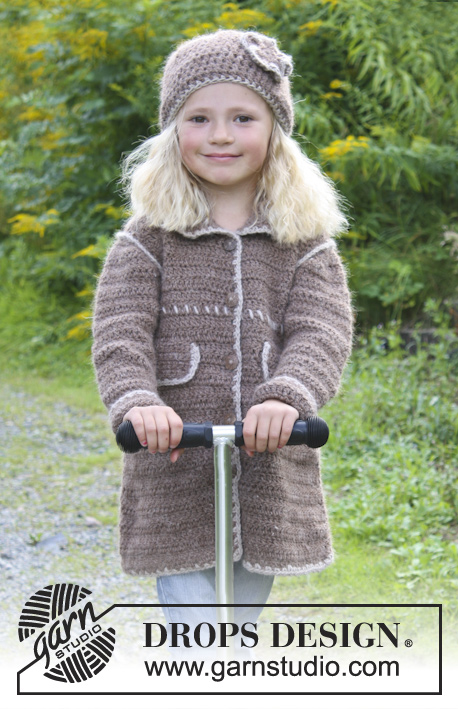 |
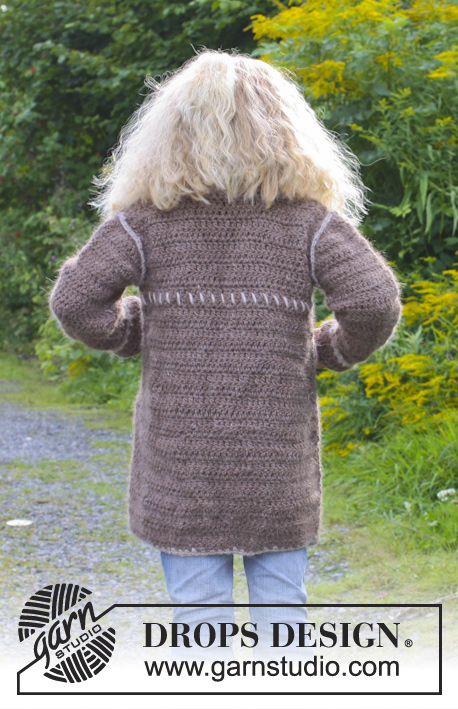 |
DROPS kabát a čepice s ozdobným obšitím háčkované z příze "DROPS ♥ YOU #4" nebo "Nepal".
DROPS Extra 0-938 |
|
|
TIP - KABÁT: První DS v řadě nahrazujeme 3 řo. TIP – UJÍMÁNÍ (KABÁT): 1 DS ujmeme sháčkováním 2 DS dohromady, takto: Háčkujeme 1 DS do prvního DS, ale nedokončíme jej – před posledním protažením příze začneme háčkovat další DS a při jeho dokončování protáhneme přízi všemi 3 smyčkami na háčku. 2 DS ujmeme sháčkováním 3 DS dohromady, takto: Háčkujeme 1 DS do prvního DS, ale nedokončíme jej – před posledním protažením příze začneme háčkovat další DS, ale opět jej nedokončíme a před posledním protažením příze uháčkujeme 3. DS; při jeho dokončování pak protáhneme přízi všemi 4 smyčkami na háčku. TIP - ČEPICE: První DS na začátku každé kruhové řady DS nahrazujeme 3 řo. Každou kruhovou řadu končíme 1 pevným okem do 3. řo ze začátku kruhové řady. První KS na začátku každé kruhové řady KS nahrazujeme 1 řo. Každou kruhovou řadu končíme 1 pevným okem do 1. řo ze začátku kruhové řady. TIP – PŘIDÁVÁNÍ (ČEPICE): Přidáváme rozháčkováním 1 DS na dva (tj. do 1 DS uháčkujeme 2 DS). -------------------------------------------------------- KABÁT ZADNÍ DÍL: Háčkem č.6 uháčkujeme světle hnědou přízí 61-63-68-73-78 řo. Práci otočíme, uháčkujeme 1 DS do 4. řo od háčku a pokračujeme 1 DS do každého z následujících 2-4-4-4-4 řo, *1 řo vynecháme, po 1 DS do každého z následujících 4 řo*, *-* opakujeme v průběhu celé řady = 48-50-54-58-62 DS – viz TIP! Pokračujeme řadami DS. Ve výši 15 cm ujmeme na každé straně 1 DS – sháčkujeme dohromady druhý a třetí DS a pak 2 DS od konce řady – viz TIP - UJÍMÁNÍ! Ujímání opakujeme vždy po 5-5-6-6-7 cm výšky ještě 3x = 40-42-46-50-54 DS. Ve výši 33-36-39-42-45 cm začneme tvarovat průramky – ujímáme na každé straně, takto: nad prvními 2-2-3-4-5 DS háčkujeme pevná oka, pokračujeme DS až po poslední 2-2-3-4-5 DS v řadě, práci otočíme. Pokračujeme DS, v řadě nyní máme 36-38-40-42-44 DS. Pokračujeme do výše asi 47-51-55-59-63 cm. Nyní háčkujeme 1 řadu DS jen nad vnějšími 12-13-13-14-14 DS na každé straně dílu = náramenice (prostředních 12-12-14-14-16 DS = průkrčník). Přízi odstřihneme a zapošijeme. PRAVÝ PŘEDNÍ DÍL: Háčkem č.6 uháčkujeme světle hnědou přízí 34-36-38-41-43 řo. Práci otočíme, uháčkujeme 1 DS do 4. řo od háčku a pokračujeme 1 DS do každého z následujících 5-2-4-2-4 řo, *1 řo vynecháme, po 1 DS do každého z následujících 4 řo*, *-* opakujeme v průběhu celé řady = 27-28-30-32-34 DS. Pokračujeme řadami DS (3 krajní DS u okraje předního dílu = léga). Ve výši 15 cm začneme na boční straně ujímat – stejně jako u zadního dílu. Po dokončení ujímání zbývá v řadě 23-24-26-28-30 DS. Ve výši 33-36-39-42-45 cm přestaneme háčkovat nad krajními 2-2-3-4-5 DS na boční straně. Nad zbylými 21-22-23-24-25 DS háčkujeme dále řadami DS. Ve výši 43-47-50-54-57 cm přestaneme háčkovat nad krajními 7-7-8-8-9 DS u předního okraje. Na této straně dále ujímáme po 1 DS: v následujících 2 řadách sháčkujeme předposlední 2 DS dohromady = 12-13-13-14-14 DS náramenice. Ve výši 48-52-56-60-64 cm přízi odstřihneme a zapošijeme. LEVÝ PŘEDNÍ DÍL: Háčkujeme stejně jako pravý přední díl, jen zrcadlově převrácený. RUKÁV: Háčkem č.6 uháčkujeme světle hnědou přízí 32-32-32-39-39 řo. Práci otočíme, uháčkujeme 1 KS do 2. řo od háčku a pokračujeme 1 KS do každého z následujících 5-5-5-2-2 řo, *1 řo vynecháme, po 1 KS do každého z následujících 4 řo*, *-* opakujeme v průběhu celé řady = 26-26-26-31-31 KS (první řo v řadě NEpočítáme jako KS). Práci otočíme a pokračujeme 1 DS do každého KS. Ve výši 10 cm přidáme na každé straně 1 DS – druhý a předposlední DS v řadě rozháčkujeme na 2. Přidávání opakujeme vždy po 2-2-2-3-3 řadách ještě 3-4-5-4-5x = 34-36-38-41-43 DS. Ve výši 26-30-34-37-41 cm začneme tvarovat rukávovou hlavici: nad prvními 3 DS háčkujeme pevná oka, pokračujeme DS až po poslední 3 DS v řadě, práci otočíme. Uháčkujeme 3 řo, následující 3 DS sháčkujeme dohromady – viz TIP - UJÍMÁNÍ! Háčkujeme DS až po poslední 4 DS v řadě, následující 3 DS sháčkujeme dohromady, 1 DS do posledního DS. Takto pokračujeme – v každé řadě sháčkujeme poslední 3 DS v řadě dohromady – až do výše 33-37-41-45-49 cm. Přízi odstřihneme a zapošijeme. DOKONČENÍ: Sešijeme náramenice, postranní a rukávové švy. Vsadíme rukávy. Na levý přední díl přišijeme knoflíky: horní knoflík umístíme asi 2 cm pod průkrčník (začátek límce), dolní knoflík asi 12 cm nad dolní okraj kabátu. Ostatní knoflíky rovnoměrně rozmístíme mezi tyto dva krajní. Knoflíky zapínáme do légy pravého předního dílu. LÍMEC: Háčkem č.6 uháčkujeme světle hnědou přízí po obvodu průkrčníku 35-50 KS. Pokračujeme řadami KS až je límec vysoký asi 6-7-7-8-8 cm. Pak přízi odstřihneme a zapošijeme. ŠIKMÉ STEHY: Béžovou přízí vyšijeme ozdobné šikmé stehy na hrudi i zádech, asi 1-2 cm pod průramky. Stehy by měly být dlouhé asi 1,5 cm a rozestupy mezi nimi by měly být asi 1,5 cm. OZDOBNÉ KAPESNÍ KLOPA: Háčkem č.6 uháčkujeme světle hnědou přízí 18-18-20-20-22-22 řo (vč. 1 řo na otočení). 1. řadu háčkujeme takto: 1 KS do 2. řo, po 1 KS do každého z následujících 2 řo, 1 řo vynecháme, *po 1 KS do každého z následujících 3 řo, 1 řo vynecháme*, *-* opakujeme a končíme 1 KS do každého z posledních 1-1-3-3-1-1 řo = 13-13-15-15-16-16 KS. Pokračujeme řadami KS až uháčkujeme asi 6-6-6-7-7-7 cm výšky. Pak přízi odstřihneme a zapošijeme. Stejným způsobem uháčkujeme i druhou klopu. Klopy přišijeme asi 3-5 cm pod šikmé stehy na předních dílech – přišíváme je drobnými stehy po celé šířce horní hrany, nakonec ještě přichytíme oba dolní rohy klopy. OBHÁČKOVÁNÍ: Háčkem č.6 obháčkujeme béžovou přízí všechny okraje kabátu – začínáme uprostřed zadní strany límce. Uháčkujeme 1 KS, *1 řo, asi 1 cm vynecháme, 1 KS do následujícího oka*, *-* opakujeme podél celého límce, dolů podél předního dílu, kolem dolního okraje, nahoru podél druhého předního dílu a druhé strany límce. Končíme 1 pevným okem do KS ze začátku kruhové řady. Stejným způsobem obháčkujeme okraje rukávů i kapesních klop. OBHÁČKOVÁNÍ průramků: Obháčkujeme průramky – v místech, kde jsou vsazovány rukávy (překryjeme tak vzniklý šev). Háčkujeme háčkem č.6 a začínáme uprostřed podpaží. Uháčkujeme 1 KS, *1 řo, asi 1 cm vynecháme, 1 KS*, *-* opakujeme po celém obvodu průramku a končíme 1 pevným okem do prvního KS ze začátku kruhové řady. -------------------------------------------- ČEPICE: Háčkujeme shora dolů, od vrcholku k lemu. Háčkem č.6 uháčkujeme světle hnědou přízí 4 řo a spojíme je pevným okem do kroužku. 1. KRUHOVÁ ŘADA: Viz TIP! Do kroužku z řo uháčkujeme 8 DS. 2. KRUHOVÁ ŘADA: po 2 DS do každého DS v průběhu celé kruhové řady = 16 DS. 3. KRUHOVÁ ŘADA: *1 DS do prvního DS, 2 DS do následujícího DS*, *-* opakujeme v průběhu celé kruhové řady = 24 DS. 4. KRUHOVÁ ŘADA: *po 1 DS do každého z prvních 2 DS, 2 DS do následujícího DS*, *-* opakujeme v průběhu celé kruhové řady = 32 DS. 5. KRUHOVÁ ŘADA: *po 1 DS do každého z prvních 3 DS, 2 DS do následujícího DS*, *-* opakujeme v průběhu celé kruhové řady = 40 DS. 6. KRUHOVÁ ŘADA: *po 1 DS do každého z prvních 4 DS, 2 DS do následujícího DS*, *-* opakujeme v průběhu celé kruhové řady = 48 DS. 7. KRUHOVÁ ŘADA: *po 1 DS do každého z prvních 5 DS, 2 DS do následujícího DS*, *-* opakujeme v průběhu celé kruhové řady = 56 DS. Pro velikost 3/5 let zde přidávání končí. 8. KRUHOVÁ ŘADA – PLATÍ POUZE PRO VELIKOSTI 6/9 – 10/12 let: háčkujeme po 1 DS do každého DS a SOUČASNĚ přidáme rovnoměrně 3-6 DS (viz TIP - PŘIDÁVÁNÍ!) = 59-62 DS. VŠECHNY VELIKOSTI: Nyní háčkujeme po 1 DS do každého DS v každé kruhové řadě až do výše asi 18-19-20 cm (= celková výše čepice). Přízi změníme na béžovou a háčkujeme po 1 KS do každého DS v průběhu celé kruhové řady. Přízi odstřihneme a zapošijeme. KYTIČKA: Háčkem č.6 uháčkujeme světle hnědou přízí 6 řo a spojíme je pevným okem do kroužku. 1. KRUHOVÁ ŘADA: 1 řo, do kroužku z řo 1 PDS, *7 řo, 1 pevné oko vpíchnuté pod 2 nitě na přední straně předcházejícího PDS, 2 PDS do kroužku z řo*, *-* opakujeme, až máme uháčkováno 5 obloučků z řo, 7 řo, 1 pevné oko vpíchnuté pod 2 nitě na přední straně předcházejícího PDS, 1 PDS do kroužku z řo a končíme 1 pevným okem do 1. řo ze začátku kruhové řady. 2. KRUHOVÁ ŘADA: pevná oka po první oblouček z řo, 1 řo, 12 PDS do obloučku z řo, *12 PDS do následujícího obloučku z řo*, *-* opakujeme u všech obloučků z řo a končíme 1 pevným okem do 1. řo ze začátku kruhové řady. Přízi odstřihneme a zapošijeme. 3. KRUHOVÁ ŘADA: přízi změníme na béžovou a háčkujeme 1 pevné oko do druhého PDS z 1. kruhové řady, 1 řo, 1 KS do téhož oka. Obloučky z řo ohneme směrem k sobě a za zadní stranu všech PDS háčkujeme po 1 KS – vpichujeme pod 1 nit na zadní straně každého PDS (přední strana PDS z předchozí kruhové řady vstoupí do popředí a je na přední straně jasně patrná). Mezi obloučky háčkujeme 1 velmi volný KS do druhého PDS z 1. kruhové řady. Končíme 1 pevným okem do prvního řo ze začátku kruhové řady. Přízi odstřihneme a zapošijeme. DOKONČENÍ: Kytičku přišijeme na čepici a zapošijeme konce přízí. |
|

|
|
Dokončili jste tento model?Pak označte své fotky tagem #dropspattern nebo je pošlete do galerie #dropsfan. Potřebujete s tímto návodem poradit?Otevřete-li si návod na stránce garnstudio.com, najdete tam 7 výukových video-ukázek, Komentáře/Dotazy a další užitečné informace. © 1982-2025 DROPS Design A/S. Vyhrazujeme si veškerá práva. Tento dokument, včetně všech jeho dílčích částí, podléhá autorským právům. Podrobnější komentář k možnostem užití našich návodů najdete dole pod každým návodem na našich stránkách. |
|







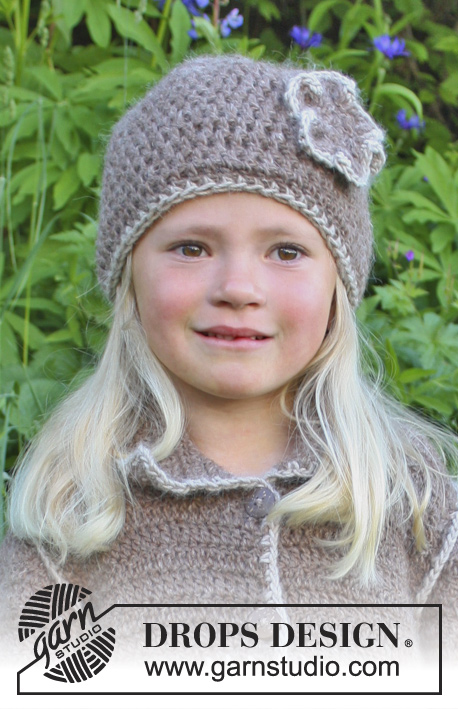
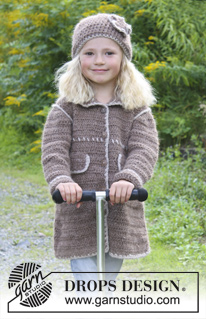
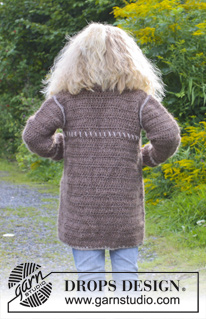
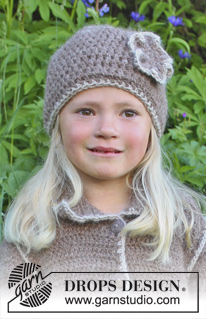




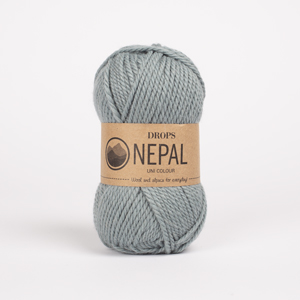
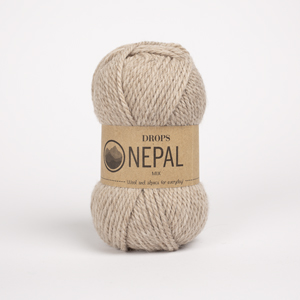
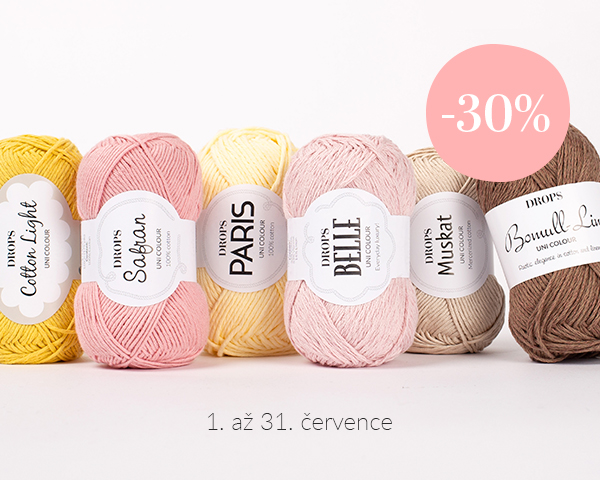













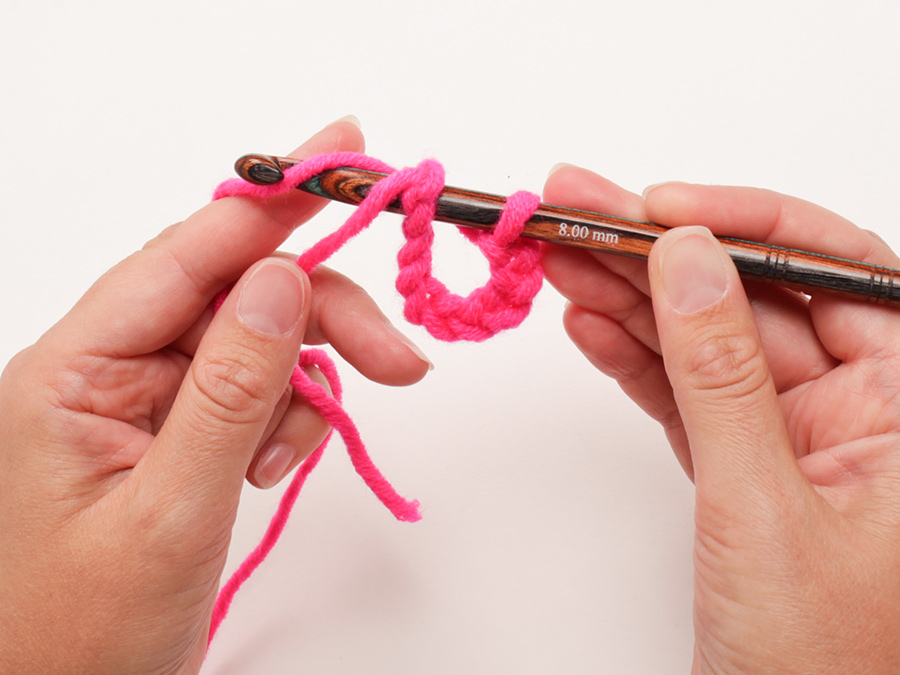





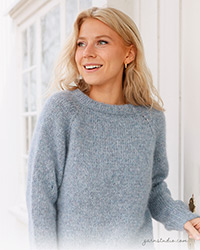
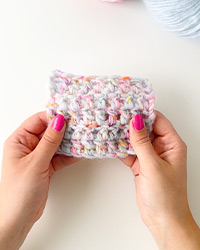
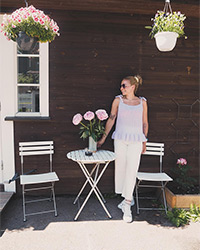
Přidejte komentář k návodu DROPS Extra 0-938
Rádi bychom věděli, co si o tomto modelu myslíte!
Pokud se chcete na něco zeptat, dbejte prosím na to, abyste ve formuláři níže vybrali správnou kategorii - díky tomu se dříve dozvíte, co potřebujete vědět. Povinná pole jsou označena *.